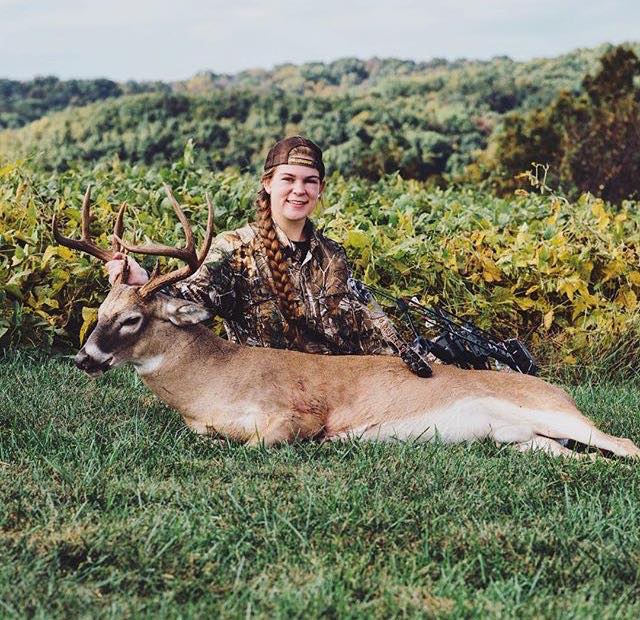Beginning To Hunt Scrapes
Filed under: Bow Hunting, Hunting Blog
Its now mid-October and fall is all around us. I like cool mornings on the stand because they bring a feeling of rejuvenation to the season. Cooler temperatures also mean it’s time to hunt scrapes! Scraping activity is increasing quickly.
In preparation for hunting scrapes, we key into the locations that have scrapes year after year. Scrapes act as communication points for deer within an area. Commonly seen on trail cameras, a deer will urinate on their tarsal gland which personalizes the mark that they leave in the scrape. The urine comes in contact with bacteria located on the deer’s glands which are unique to that specific deer and distinguishable among the herd. The urine then falls into the scrape letting all the deer know who was working the scrape before them!

Raleigh just killed this mature buck on a ridge at The Proving Grounds that generally receives the first scraping activity each fall.
Peak scraping activity generally occurs two weeks prior to peak rut. That means at The Proving Grounds we will soon be setting up 20 feet above scrapes. Not just any scrape will work. To put the odds in our favor we will target scrapes that occur in the same location yearly, are in transition areas, and are located so we can access them from downwind. These areas are not as common as they may seem. Scouting and recording deer movement from year to year is vital. But once you find these areas they can be extremely productive when the pre-rut activity is at its highest.
Understanding biological changes that deer undergo throughout the length of the entire season will make you a better hunter. These changes will determine which stand you hunt and at what time of the year. From now until November we will monitor scrape activity very closely. When scraping activity is at its highest you can bet we will be in our Summit treestands!
Growing quality whitetails,
Matt



